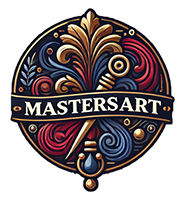Poker is a popular card game that has captivated players for generations, while physical therapy serves a crucial role in rehabilitation and improving mobility. Understanding both concepts can lead to interesting insights into how we approach strategy and recovery. This article explores how do poker hands work in relation to physical therapy, providing a unique perspective on both topics.
Understanding Poker Hands
At its core, poker involves a combination of skill, strategy, and luck. One of the fundamental aspects of the game is understanding poker hands. Here’s how poker hands are ranked:
- Royal Flush: A, K, Q, J, 10 of the same suit.
- Straight Flush: Five consecutive cards of the same suit.
- Four of a Kind: Four cards of the same rank.
- Full House: Three of a kind and a pair.
- Flush: Five cards of the same suit, not in sequence.
- Straight: Five consecutive cards of different suits.
- Three of a Kind: Three cards of the same rank.
- Two Pair: Two pairs of different ranks.
- One Pair: Two cards of the same rank.
- High Card: The highest card when no other hands are formed.
Linking Poker Hands to Physical Therapy
Just as players in poker must understand the value of their hands, individuals undergoing physical therapy must recognize their own strengths and challenges. The connection between the two lies in strategic thinking, risk assessment, and optimal decision-making. Here are some parallels:
Strategic Assessment
- Poker: Knowing when to hold, fold, or raise based on the strength of one’s hand.
- Physical Therapy: Evaluating one’s physical abilities and limitations to set realistic rehabilitation goals.
Risk Management
- Poker: Calculating the risks of betting based on the potential rewards.
- Physical Therapy: Balancing the intensity of exercises to push limits without causing injury.
Optimal Decision-Making
- Poker: Deciding whether to bluff or play your hand face-up can change the game’s outcome.
- Physical Therapy: Choosing the right therapeutic approach can lead to faster recovery.
FAQs
What are some common goals in physical therapy?
Common goals in physical therapy include:
- Increasing mobility and flexibility.
- Reducing pain.
- Restoring function after injury or surgery.
- Improving strength and endurance.
How can poker improve mental health?
Playing poker can enhance mental health by:
- Improving cognitive skills like decision-making and reasoning.
- Encouraging social interaction and connection.
- Providing a healthy outlet for stress relief.
What types of exercises are typically included in physical therapy?
Physical therapy often involves:
- Range of motion exercises.
- Strength training.
- Balance and coordination activities.
- Functional exercises tailored to the patient’s needs.
Conclusion
Understanding how poker hands work provides insights not only into the game itself but also into the systematic approach needed in physical therapy. The connections between strategy, risk management, and decision-making in both poker and physical rehabilitation highlight the importance of being informed and adaptive in various aspects of life.
This unique perspective emphasizes that whether navigating the complexities of a poker table or a rehabilitation program, an informed and strategic approach can lead to success.
